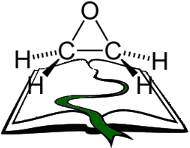Introduction
One Archive – Two scientific approaches on its content – combination of biochemical and socio-/art-historical research.
What does that mean?
Basis for all the work within the project is the unique and valuable archive of the Protestant Parish of the Holy Trinity in Świdnica, Poland, one of the 2 remaining “Churches of Peace” erected in the middle of the 17th century in Lower Silesia. Since 2001 the churches in Świdnica as well as in Jawor were raised to UNESCO World Heritage Sites acknowledging their unique socio- and art historical value. The parish in Świdnica exists since 1652 until today and its 360-year-history has been preserved in the church archive without any major losses. Against this backdrop it seems needless to say that the archival material forms an invaluable source for research on Protestant history, art historical questions, political interactions in the region etc. performed by professors and students of the universities in Prague (CZ) and Wroclaw (PL).
But not only the content of the archival material is of general interest for researchers, but also its physical condition. Namely the conservatory state is important: the material was infested with mould, one of the most common and simultaneously dangerous fungal infestations that constitute risks not only for the material itself (destruction) but also health hazard for the user. In order to free the material of this mould infection a cleansing method was performed using ethylene oxide fumigation. The use of this biocide is a questionable action, because the effects of the gas-remains are not fully explored yet. The question remains whether the fumigated material may cause risks to health of users by off-gassing ethylene oxide. This biochemical scientific approach makes up the second part of the research within the project, aiming also at finding alternative methods for mould disinfection apart from possibly hazardous ethylene oxide fumigation.






